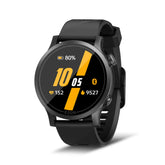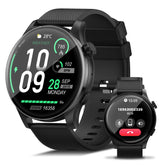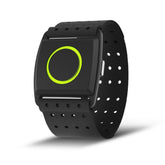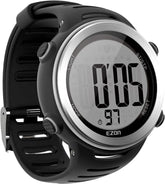Marathon Training for Weight Loss: Burn Calories and Build Stamina
Marathon training is more than a path to 26.2 miles—it’s a powerful strategy for weight loss and stamina building, combining high-calorie burn with cardiovascular endurance. By pairing a structured marathon training program with smart calorie-burning strategies and recovery routines, you can shed fat while building the stamina to tackle the marathon distance. In this guide, we’ll explore how to design a plan that maximizes fat loss, includes effective interval workouts, and ensures sustainable progress.
The Synergy Between Marathon Training and Weight Loss
Marathons demand sustained effort, making them ideal for burning calories and improving metabolism:
- Caloric Expenditure: A 150-pound runner burns ~1,000 calories per 10 miles, with long runs boosting post-workout calorie burn (EPOC) for up to 48 hours.
- Muscle Preservation: Focus on strength training alongside running to maintain muscle mass, which boosts resting metabolic rate.
- Hormonal Benefits: Regular running reduces cortisol (stress hormone) and increases adiponectin (a hormone that improves fat metabolism).
Strategy 1: Optimize Calorie Burn with Smart Training
1. Prioritize Fat-Burning Zones (Zone 2 Training)
- What It Is: Running at 60–70% of max heart rate (MHR), where your body burns fat as the primary fuel source.
- How to Implement: Use a calories burned calculator or sports watch to track heart rate during easy runs (e.g., 1–2 hours at Zone 2, 3–4 days/week).
- Example: A 90-minute Zone 2 run burns ~600–800 calories, with 70% coming from fat stores.
2. Incorporate High-Intensity Interval Training (HIIT)
- Why It Works: Short bursts of max effort (Zone 4–5) boost metabolism and burn calories efficiently, even after the workout ends.
-
Marathon-Specific Intervals:
- 8x400m at 5K pace (90-second recovery): Improves leg speed and EPOC, adding 10–15% extra calorie burn.
- Hill sprints: 10x30-second uphill sprints (2-minute walk recovery) to build power and torch calories.
3. Long Runs for Sustained Burn
- Weekly Long Run: Gradually increase to 18–20 miles, burning 1,500–2,000 calories while improving fat oxidation for future runs.
- Pacing Tip: Use a calories burned calculator to ensure you’re in Zone 2–3, avoiding the carb-burning Zone 4 that can lead to glycogen depletion.
Strategy 2: Build Stamina Without Overtraining
1. Progressive Overload (10% Rule)
- Mileage Increase: Never increase weekly mileage by more than 10% to prevent injury and burnout.
-
Sample Progression:
- Week 1: 20 miles
- Week 2: 22 miles (10% increase)
- Peak Week: 40–50 miles, depending on fitness level.
2. Tempo Runs for Lactate Threshold
- What It Is: Running at 75–85% MHR (Zone 3), just below the point where lactic acid builds up.
- Benefits: Improves the pace you can sustain for hours, crucial for marathon efficiency and calorie burn.
- Workout Example: 3x2 miles at tempo pace (e.g., 8:30/mile for a 4-hour marathon goal), 3-minute recovery.
3. Cross-Training for Active Recovery
- Low-Impact Activities: Cycling, swimming, or elliptical training on rest days to maintain calorie burn without leg fatigue.
- Core Strength: Planks, glute bridges, and Russian twists 2–3x/week to improve running form and prevent injuries that stall progress.
Strategy 3: Nutrition for Fat Loss and Performance
1. Calorie Deficit Without Sabotaging Training
- Goal: Aim for a 300–500 calorie daily deficit (e.g., burn 2,500 calories, eat 2,000–2,200).
-
Nutrient Timing:
- Pre-Run: 30–60g carbs 1 hour before (oatmeal, banana) to fuel workouts.
- Post-Run: 20–30g protein + 50g carbs within 60 minutes (Greek yogurt + berries) to aid recovery and preserve muscle.
2. Prioritize Whole Foods
- Protein: Chicken, fish, tofu, and lentils to maintain muscle mass (1.2–1.6g/kg body weight daily).
- Healthy Fats: Avocado, nuts, and olive oil to support hormone balance and satiety.
- Complex Carbs: Quinoa, sweet potatoes, and oats for sustained energy during long runs.
3. Hydration for Metabolism
- Drink 3–4L Water Daily: Dehydration slows metabolism and increases hunger—add electrolytes (salt, magnesium) for runs over 90 minutes.
Strategy 4: Recovery for Sustainable Weight Loss
1. Quality Sleep for Fat Loss
- Aim for 7–9 Hours Nightly: Poor sleep increases ghrelin (hunger hormone) and decreases leptin (satiety hormone), leading to cravings.
- Track Sleep with a Sports Watch: EZON’s heart rate series monitors deep sleep and REM cycles, ensuring you’re recovering optimally.
2. Active Recovery Techniques
- Foam Rolling: 10–15 minutes daily to reduce muscle tightness and improve blood flow.
- Yoga/Pilates: 1–2 sessions/week to boost mobility and reduce stress, critical for maintaining a calorie deficit.
3. Listen to Your Body
- Rest Day Signs: Elevated resting heart rate, persistent soreness, or fatigue—take an extra day off to avoid overtraining, which stalls weight loss.
Gear to Enhance Your Marathon Weight Loss Journey
1. Calories Burned Calculator in a Sports Watch
- EZON Sports Watch Series: Tracks real-time calorie burn, heart rate, and distance, ensuring you hit target zones during runs.
- GPS Accuracy: Multi-satellite support for precise route tracking, ideal for calculating effort on hilly terrain.
2. Heart Rate Monitor for Zone Training
- EZON Heart Rate Series: ECG-grade sensors for accurate heart rate data, helping you stay in fat-burning zones during easy runs and intensity during intervals.
3. Lightweight Running Shoes
- Choose Wisely: Cushioned shoes like the Brooks Ghost or Hoka Clifton to reduce impact and enable longer, more comfortable runs.
Sample 12-Week Marathon Training Plan for Weight Loss
| Phase | Focus | Weekly Structure |
|---|---|---|
| Weeks 1–4 | Base Building | 3x Zone 2 runs, 1x HIIT session, 1x strength training |
| Weeks 5–8 | Stamina & Intervals | 2x Zone 2 runs, 1x tempo run, 1x interval session |
| Weeks 9–12 | Peak & Taper | 1x long run, 1x threshold run, 1x easy recovery run |
Key Workouts:
- HIIT (Weekly): 10x1-minute sprints at 90% MHR, 1-minute walk recovery—burns 400+ calories in 30 minutes.
- Long Run (Weekly): Gradually increase from 8 to 20 miles, maintaining Zone 2–3 to maximize fat oxidation.
Final Tips for Success
- Be Patient: Weight loss during marathon training is gradual—aim for 0.5–1 pound/week to preserve muscle.
- Track Progress Holistically: Use a tape measure and progress photos alongside scale weight, as muscle gain may slow scale progress.
- Celebrate Non-Scale Victories: Faster paces, longer runs, or improved energy levels are signs your plan is working.
Train Smart, Lose Weight, and Conquer the Marathon
A well-designed marathon training program combines interval workouts, strategic calorie burn, and recovery to help you lose weight while building the stamina to tackle 26.2 miles. By using tools like a calories burned calculator and prioritizing nutrition and rest, you’ll create a sustainable plan that transforms your body and fitness level.
Remember, the marathon is as much a mental journey as physical. Stay consistent, listen to your body, and let each run bring you closer to your weight loss and endurance goals. Ready to start? Lace up, hit the road, and let the miles melt away—one step at a time.









